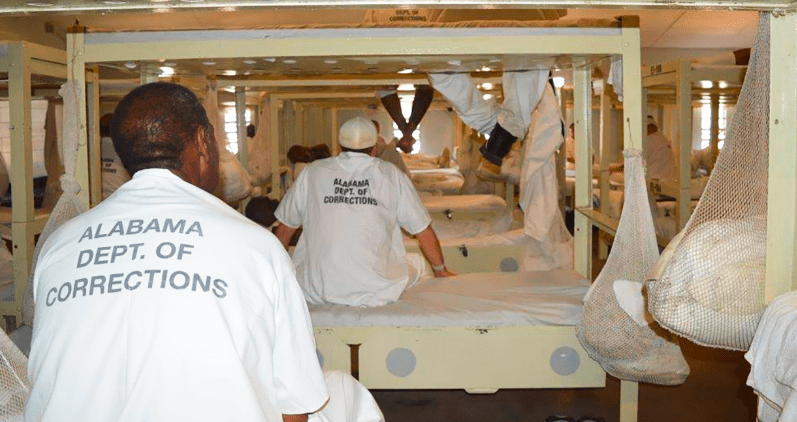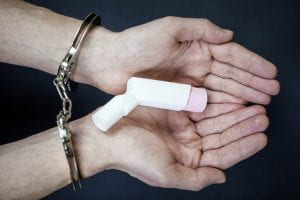June 19, 2020 by Stacy Moak, UAB Professor of Social Work
Discussions of police in everyday life have triggered strong reactions from citizens as long as we have had the concept of police. Arguments over whether they should wear uniforms, whether they should be paid, and whether they should carry weapons have all persisted throughout time and across multiple countries. The concept of the police in America was borrowed from the British system of having “beat cops” or officers who patrolled at the local level. In England, still today, these community officers do not carry weapons. The British police force was established in 1829 and employs the concept of police by consent, not by force. As a result, the general opinion is that arming the police sends the wrong message to citizens and creates more problems than it solves. Yet, in the US, officers cannot envision a police force that is not armed with firearms. Policing in America has evolved over time and developed into a punitive system of “enforcement” that has pushed the entire system away from community problem solvers and toward a militaristic mind set of reactions to certain situations, often without rational analysis of what is actually occurring. Thus, policing has evolved more toward fighting a war– the war on drugs, the war on poverty – in which police are the soldiers and citizens are the subjects. However, the evidence is clear that overuse of police as a form of social control has devastating consequences for the health of communities (Public Health Behind Bars, Robert Greifinger, 2007). Such over-policing leads directly and indirectly to destabilized communities and overall social injustice. Further, it creates a system in which activities of the poor and minorities are more highly policed and punished than activities of the wealthy or white majority. Communities that suffer the most from over-policing generally suffer from a host of other deprivations and become tangled in a web of instability. Once that occurs, perceptions of destabilized communities begin to shape the ways that people outside the community view persons who live in those communities. Persons from those communities are often portrayed as more violent, more aggressive, and less likely to respond to reason. These labels apply to everyone from that particular community, including children, and often follow those children as they enter school. Children from these communities are labeled trouble makers at very young ages (as young as 3 or 4) and are often pushed out of mainstream educational facilities. Because of interaction with the criminal justice systems, adults have trouble finding jobs and/or stable housing, and family dynamics are disrupted. A cycle of negative police/citizen interaction begins to occur because of overuse of punitive approaches to address social problems, and police officers are tasked with providing interventions across a wide array of social services more appropriate to social workers, school and marriage counselors, substance abuse counselors, soup kitchens and homeless shelters, and general mechanic and car maintenance.
When police are the first responders to social problems, punishment is the response most often handed down. Punishment, enforcement, and restraint are the skills for which police receive most of their training. Examples of this problem can be noted across the life span, but are perhaps most easily demonstrated in adolescents. For example, white youth and minority youth participate in delinquency such as recreational drug use, underage drinking, skipping school, fighting, and other types of delinquency at similar rates. Self-report studies indicate that delinquency is almost universal as a part of adolescent development. However, black and brown youth are held in juvenile detention centers at 3 to 4 times the rate of their white counterparts. Their numbers continue to increase even when juvenile crime statistics drop. Part of the reason for the disproportionate numbers of youth in juvenile detention stems from the presence of police officers in schools. Because these youth are identified as more dangerous and less amenable to treatment, school-based police officers respond with punitive practices that work to remove them from school. Once removed from school, the only real intervention at the community level is the juvenile court. Most black and brown youth live in urban areas with larger public schools. More police officers are assigned to these schools; therefore, more poor children and children of color are victims of overusing police and courts for behaviors more appropriately handled by schools and parents. Overuse of punitive practices creates a school to prison pipeline that suspends and expels more minority youth from school than their white counterparts. Even when youth are “caught” for the same activity, the minority youth is more likely to be arrested, petitioned to juvenile court, and detained in a detention center which sets off an array of negative interactions and social stigma that is almost impossible to overcome. The school to prison pipeline creates generational disenfranchisement, poverty, and systematic oppression of entire communities.
But problems in school are not the only contributor to the overuse of police in society. Lack of adequate health care also works to ensure that poor people and people of color will go to prison instead of to mental health clinics or rehabilitation centers for substance abuse and mental health issues. Instead of having diagnoses that are recognized and treated, even at very young ages, people without adequate health insurance or preventative health care are labeled by the symptoms of their illnesses. As services shrink in the community, law enforcement is used as the social service delivery system for this group. Instead of citizens receiving counseling and accurate mental health diagnosis that could treat their health issues, they are arrested, incarcerated, and offered very few if any services. For a drug charge, a person with insurance will likely go to a rehab facility. A person without insurance will likely go to prison. Studies indicate that 20% of jail inmates and 15% of prison inmates suffer from major depression or psychosis and as many as 87% of those have comorbid substance abuse issues. Citizens without insurance in our society are more likely to have unresolved trauma, which is often exacerbated by interaction with poorly trained police officers. Those same individuals are more likely to be perceived as dangerous, more aggressive, and not amenable to treatment. As a result, they are more likely to be arrested, more likely to be detained prior to trial, and more likely to be incarcerated. When they are eventually released (95% will return to communities) they are sent back to communities with little to no continuity care plan which almost insures that they will encounter the criminal justice system again.
So, what alternative police practices and systematic strategies could we envision that would work to dismantle this perpetual cycle of violence, trauma, and overall injustice that is levied disproportionately on poor and minority communities? First, I would propose that police agencies examine the role of police in everyday life and create policies that actually reflect those defined roles. The role of the police is “to protect and serve.” Let’s unpack that statement – to protect and serve – not to arrest, apprehend, serve as judge and juror, intimidate, harass, incarcerate, shoot, bully, or kill – protect and serve. Yet most of our emphasis in police departments across the US revolves around tactical weaponry, restraint techniques, defensive driving, and legal procedures of arrest that will lead to convictions. Perhaps refocusing training on de-escalation strategies, trauma informed care, and implicit bias could provide better understanding and more opportunities for officers to assist in resolving conflicts peacefully. Do police officers really need full armored SWAT gear? And military grade weaponry? When police posture defensively as if their role is to protect themselves against dangerous citizens (again as if they are soldiers and citizens are the subjects) the response from citizens is likely also to be defensive and reactionary. Beyond new recruits at the police academy, officers who have been on the force for long periods of time and serve as field training officers need the same training as new recruits on the above-mentioned issues. Many times, they work to undermine positive training received in police academies. If these more seasoned officers resist training, or refuse to comply with new protocols, they should be reassigned to departmental activities that do not require citizen interaction. We can no longer afford to have business as usual and rely on statements like, “that’s the way it has always been.” Agencies must be proactive in removing old ways of thinking and performing and replace them with more educated and better-informed practices that work to restore police-community relations. A merit system could be implemented that rewards positive behavior with pay incentives or merit toward promotions. Police should be treated as professionals, paid as professionals, and held accountable as professionals.
Secondly, I would propose that we examine the services for which police are being used in place of other, more appropriate social service delivery specialists. For example, commissioned law enforcement officers are not the proper authority to handle adolescents in schools – especially when dollars spent to employ the police could be redirected to employ social workers and counselors to address the underlying causes of much adolescent behavior. The experiment with School Resource Officers (SROs) was intended to create trust among students and police where police would function in a counselor/educator role. However, the reality has been that schools have turned over general disciplinary actions as well as drug/alcohol enforcement provisions to SROs. They do not work as much in an education/counselor capacity as they do as the enforcer for a host of school-based rule infractions that lead to more kids being suspended, expelled, or processed in juvenile court. Instead of fostering healthy relationships with police and students, students do not trust them and try to avoid them. A better alternative seems to be to employ a school based social worker at each school instead of an SRO. One argument for SROs has been the prevalence of school shootings and the need for student safety. However, school shootings were not the original intent of SROs, and school shootings remain very rare occurrences. When these tragedies do occur, it is rarely an SRO who protects students or who intervenes during these instances, which makes school safety concerns an inadequate argument for placing police officers in schools. Their presence adds to the school to prison pipeline and works to create hostility between youth and police very early in life. Zero tolerance policies should be replaced with restorative community policies within schools to teach negotiation strategies that students could actually use in future interactions. Dialogue about complex issues should be encouraged among students and opportunities should be seized to provide education around community health, community harm, and community restoration.
This conversation would not be complete without recognizing that the work of policing a community is stressful. Rarely do police officers receive adequate training for the job. Even more rarely do they receive counseling and support for their own trauma that they experience on the job. For example, one of the most stressful parts of law enforcement jobs is not the hostage negotiation that ends in a shoot-out; instead, it is responding to traffic accidents. Officers might retire from the police force without ever using their firearm, but the chances of them viewing a dead child in an overturned car after a crash are high. When officers’ trauma is not addressed, that trauma becomes the lens through which everything else is viewed. A normal response is to have a heightened sense of self-preservation – and every possible encounter with a citizen presents the possibility of a negative outcome. Some of the resources within police departments should be reinvested in the officers to provide training, support, and counseling that they need to be healthy community members both on and off the job. To complement these resources, the culture within the department must also change to promote positive mental health among officers. Currently the stigma of mental health issues as signs of weakness permeate police culture. Changing those views will take time, but the culture of health that is discussed in commu
nities must also apply to police agencies throughout the US.
Finally, and probably the most inflammatory part of this post, we must have honest conversations about the systematic racial oppression in the US and the role that all systems of government have played in developing and keeping it in place. Minority groups are presented as more dangerous, more violent, more in need of police, and only responsive to force. Such portrayals are not accidental, but work specifically to detract from empathy that might otherwise be shown to them as fellow human beings. The scourge of racism is so deeply engrained in our justice systems in the US that even minority officers do not know how to discuss it, react to it, or work to dismantle it. The militarized hierarchy within police agencies causes a veil of silence among officers who fear reprimand if they are perceived as trouble makers, liberals, or sympathizers. Citizens have so little trust in the police, or the system of justice, that they are often victims without a voice. These are not characteristics of a free society, and they must be replaced with conversation, understanding, and a shared vision for what citizens want the police to do in their communities and how that will be accomplished. In the end, police officers are public servants, and their role is to protect and serve the community and every member of the community. For anyone who reads this and has an interest in taking a deeper dive into racism in the US, I would recommend three books to read: The Color of Law: A Forgotten History of How Our Government Segregated America by Richard Rothstein; Why are all the black kids sitting together in the cafeteria by Beverly Daniel Tatum; and So you want to talk about race by Ijeoma Oluo.









